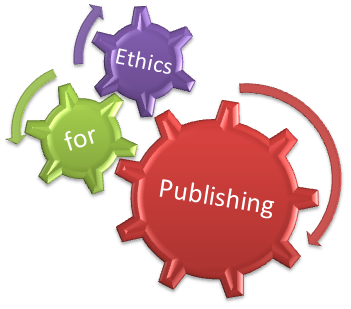Microarray Gene Expression and Multiclass Cancer Classification Using Improved PSO Based Evolutionary Fuzzy ELM Classifier with ICGA Gene Selection
(*) Corresponding author
DOI's assignment:
the author of the article can submit here a request for assignment of a DOI number to this resource!
Cost of the service: euros 10,00 (for a DOI)
Abstract
Cancer has become one of the dreadful and most widely spreading diseases in recent years. Cancer diagnosis has become an active research area in the field of medical image processing. DNA microarrays are considered as an effectual tool used in molecular biology and cancer diagnosis. As the superiority of this method has been recognized, a variety of open queries occur about appropriate test of microarray data. As the numbers of cancer victims are increasing tremendously, the requirement of an efficient and accurate cancer classification system has become essential. For the above impenetrability and to obtain better consequences of the system with accuracy a combination of Integer-Coded Genetic Algorithm (ICGA) and Improved Particle Swarm Optimization (IPSO), coupled with an evolutionary fuzzy extreme learning machine (E-FELM), is used for gene selection and cancer classification. ICGA is used with IPSO based E-FELM classifier to chose an optimal set of genes which results in an efficient hybrid algorithm that can handle sparse data and sample imbalance. The performance of the proposed approach is evaluated and the results are compared with existing methods.
Copyright © 2013 Praise Worthy Prize - All rights reserved.
Keywords
References
Boufera, H., Bendella, F., Intelligent decision based on multi agent system - To aid breast cancer diagnosis, (2010) International Review on Computers and Software (IRECOS), 5 (3), pp. 331-336.
M. Ringner, C. Peterson, and J. Khan, “Analyzing Array Data Using Supervised Methods,” Pharmacogenomics, vol. 3, no. 3, pp. 403-415, 2002
Harrington, C. A., Rosenow, C., and Retief, J. (2000): Monitoring gene expression using DNA microarrays. Curr. Opin. Microbiol., 3:285-291.
Eisen, M. B., Spellman, P. T., Brown, P. O. and Bostein, D. (1998): Cluster analysis and display of genome-wide expression patterns. Proc. of the Natl. Acad. of Sci. USA, 95:14863-14868
Dudoit, S., Fridlyand, J. and Speed, T. P. (2000): Comparison of discrimination methods for the classification of tumors using gene expression data. Technical Report 576, Department of Statistics, University of California, Berkeley
Ryu, J. and Cho, S. B. (2002): Towards optimal feature and classifier for gene expression classification of cancer. Lecture Note in Artificial Intelligence, 2275:310-317
Saras Saraswathi, Suresh Sundaram, Narasimhan Sundararajan, Michael Zimmermann, and Marit Nilsen-Hamilton, “ICGA-PSO-ELM Approach for Accurate Multiclass Cancer Classification Resulting in Reduced Gene Sets in Which Genes Encoding Secreted Proteins Are Highly Represented”, IEEE/ACM TRANSACTIONS ON COMPUTATIONAL BIOLOGY AND BIOINFORMATICS, VOL. 8, NO. 2, MARCH/APRIL 2011
V. Rashtchi, H. Shayeghi, M. Mahdavi, A. Kimiyaghalam, E. Rahimpour, “Using an Improved PSO Algorithm for Parameter Identification of Transformer Detailed Model”, International Journal of Electrical and Electronics Engineering 2:11 2008.
Zhang Qizhong, “Gene Selection and Classification Using Non-linear Kernel Support Vector Machines Based on Gene Expression Data”, IEEE, 2007.
Mohr, J. ; Sambu Seo ; Obermayer, K., “Automated Microarray Classification Based on P-SVM Gene Selection”, IEEE, 2008.
Banka, H. ; Dara, S., “Feature Selection and Classification for Gene Expression Data Using Evolutionary Computation”, IEEE, 2012.
Dash, S. ; Patra, B., “Rough set aided gene selection for cancer classification”, IEEE, 2012.
S. Suresh, S. Saraswathi, and N. Sundararajan, “Performance Enhancement of Extreme Learning Machine for Multi-Category Sparse Cancer Classification,” Eng. Applications of Artificial Intelligence, vol. 23, pp. 1149-1157, 2010.
S. Suresh, R.V. Babu, and H.J. Kim, “No-Reference Image Quality Assessment Using Modified Extreme Learning Machine Classifier,” Applied Soft Computing, vol. 9, no. 2, pp. 541-552, 2009.
Yanpeng Qu, Changjing Shang, Wei Wu, and Qiang Shen, “Evolutionary Fuzzy Extreme Learning Machine for Mammographic Risk Analysis”, International Journal of Fuzzy Systems, Vol. 13, No. 4, December 2011
P.V. Naganjaneyulu, K. Satya Prasad, (2009)."An Adaptive Blind Channel Estimation of OFDM System by Worst Case H∞ Approach", International Journal of Hybrid Information Technology, Vol.2, No.4, pp: 1-6.
Ye (Geoffrey) Li, Leonard J. Cimini, Nelson R. Sollenberger, (1998). "Robust Channel Estimation for OFDM Systems with Rapid Dispersive Fading Channels", IEEE Transactions on Communications, Vol. 46, No. 7, pp: 902-915.
Prasanta Kumar Pradhan, Oliver Fausty, Sarat Kumar Patra, Beng Koon Chua, (2011). "Channel Estimation Algorithms for OFDM Systems", International Conference on Electronics Systems, National Institute of Technology, Rourkela, India.
Yonghong Zeng, W.H.Lam, Tung Sang, (2006)."Semiblind Channel Estimation and Equlization for MIMO Space-Time Coded OFDM", IEEE Transactions on Circuits and Systems, Vol.53, No.2, pp: 463-474.
H. Bölcskei, R.W. Heath, Jr., A. J. Paulraj, (2002). “Blind channel identification and equalization in OFDM-based multi-antenna systems,” IEEE Trans. Signal Processing, vol. 50, pp. 96–109.
L. Deneire, P. Vandenameele, L. Van der Perre, B. Gyselinckx, M. Engels, (2001).“A low complexity ML channel estimator for OFDM,” in Proc. IEEE Int. Conf. Commun., Helsinki, Finland, June 11–14.
S. Suresh, N. Sundarajan, and P. Saratchandran, “A Sequential Multi-Category Classifier Using Radial Basis Function Networks,” Neurocomputing, vol. 71, nos. 7-9, pp. 1345-1358, 2008.
Z. Michalewicz, Genetic Algorithm + Data Structures = Evolution Programs, third ed., pp. 18-22. Springer-Verlag, 1994.
S. Ramaswamy, P. Tamayo, R. Rifkin, S. Mukherjee, C.H. Yeang, M. Angelo, C. Ladd, M. Reich, E. Latulippe, J.P. Mesirov, T. Poggio, W. Gerald, M. Loda, E.S. Lander, and T.R. Golub, “Multiclass Cancer Diagnosis Using Tumor Gene Expression Signatures,” Proc. Nat’l Academy of Sciences USA, vol. 98, no. 26, pp. 15149-15154, Dec. 2001.
R. Zhang, G.-B. Huang, N. Sundararajan, and P. Saratchandran, “Multicategory Classification Using an Extreme Learning Machine for Microarray Gene Expression Cancer Diagnosis,” IEEE/ ACM Trans. Computational Biology and Bioinformatics, vol. 4, no. 3, pp. 485-495, July-Sept. 2007.
Zhao, Y., Xu, X., Wang, B., Bai, X., Two-dimensional fuzzy entropy image segmentation based on adaptive CPSO algorithm, (2012) International Review on Computers and Software (IRECOS), 7 (4), pp. 1767-1772.
Ahmadi, A., Mashoufi, B., A new optimized approach for artificial neural networks training using genetic algorithms and parallel processing, (2012) International Review on Computers and Software (IRECOS), 7 (5), pp. 2195-2199.
Refbacks
- There are currently no refbacks.
Please send any question about this web site to info@praiseworthyprize.com
Copyright © 2005-2024 Praise Worthy Prize








